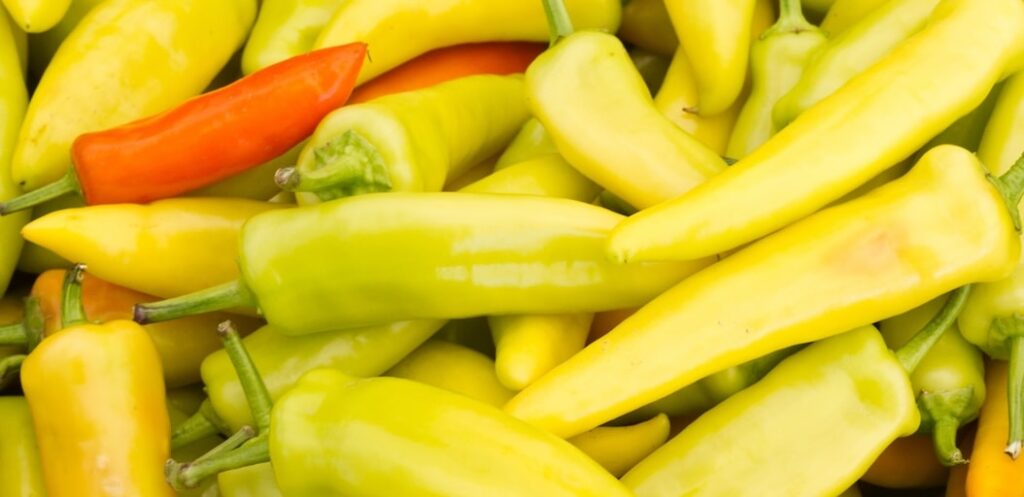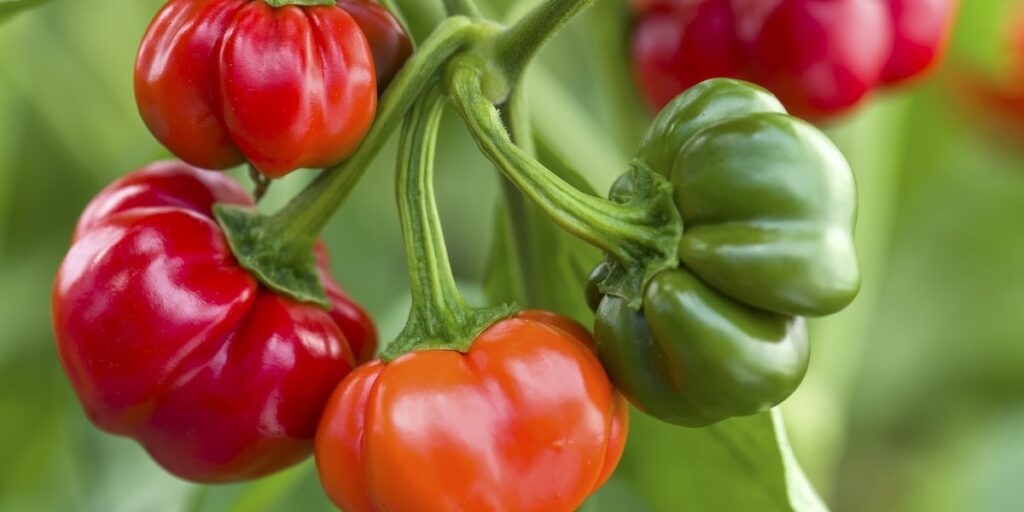Last Updated on July 25, 2025 by the Dobies Horticultural Team
Harvesting chillies at the right time is crucial for maximising their flavour, heat and overall quality. Whether you prefer a fiery kick or a milder taste, understanding how and when to harvest your chillies will help you get the most from your crop.
Here, expert chilli grower, Rob Smith, shares his top harvesting tips including how to know when your fruits are ripe, how to increase or decrease the heat level, and sensible precautions to protect sensitive skin and eyes. Here’s everything you need to know about harvesting chillies.
For more inspiration, browse our full range of chilli seeds and potted chilli plants.
How to determine the right time to harvest chillies
When you harvest your chillies will depend on the variety you’re growing and your desired heat level. Most chillies can be harvested as soon as they reach their full size and colour, which can range from green to red, yellow, or even purple. Here are the signs that your chillies are ready:
- Size and colour: Check the mature size and colour for your specific chilli variety. For example, jalapeños are typically harvested when they are 7-8 cm (3 inches) long and deep green, yet they will actually ripen to bright red; while habaneros are picked when they turn bright orange or red.
- Firmness: Chillies should feel firm to the touch. Soft spots or wrinkles indicate overripe or spoiled fruit.
- Taste test: For the most accurate assessment, taste a chilli. If it meets your flavour and heat preferences, it’s time to harvest.
Interesting Fact: Some chillies change colour multiple times as they mature, offering a spectrum of flavours from stage to stage.
How to increase the heat level of chillies

Image: Pepper Chilli ‘Zimbabwe Black’ from Dobies
If you want to boost the heat of your chillies, here are a few techniques to help intensify their capsaicin levels, the compound responsible for spiciness.
- Stress the plants: Reducing water and slightly stressing the plants can increase the heat level. Be cautious not to overdo it, as excessive stress can harm the plants.
- Extended ripening: Allow chillies to remain on the plant longer until they fully ripen and change colour. The longer they stay on the plant, the hotter they become.
- Fertilisation: Use a balanced fertiliser, and consider adding more potassium, which can enhance capsaicin production.
Top Tip: Experiment with different growing conditions to find the perfect balance that yields your desired heat level.
How to produce milder chillies

Image: Chilli Pepper ‘Hot Banana’ from Dobies
For those who prefer milder chillies, harvesting at the right time is key. Generally, younger chillies are less spicy. Here’s how to achieve a milder heat:
- Harvest early: Pick your chillies when they are still green and immature. These early-stage chillies have lower capsaicin levels and a milder taste.
- Avoid stress: Ensure the plants are well-watered and not stressed, as stress can increase heat levels.
Top Tip: Taste your chillies at different stages of growth to determine your preferred level of mildness.
The best technique for harvesting chillies

Image: Chilli Pepper ‘Pumpkin’ from Dobies
A good harvesting technique provides top quality fruits and keeps your plants healthy. Here’s my advice:
- Use scissors or pruners: To avoid damaging the plant, use scissors or pruning shears to cut the chillies off. Don’t try to pull fruits from the plant as you risk damaging them. Make the cut close to the base of the fruit.
- Handle with care: Wear gloves if handling hot varieties to prevent skin irritation. Avoid touching your face, especially your eyes, when harvesting hot chillies. Always wash your hands thoroughly after handling chillies to avoid transferring capsaicin to sensitive areas, otherwise you may regret it!
- Harvest regularly: Pick chillies regularly to encourage the plant to produce more fruit throughout the season.
Interesting Fact: Capsaicin, the compound that makes chillies hot, can remain on your skin and surfaces for a long time. Clean tools and surfaces well after harvesting.
Top tips for a bumper chilli harvest

Image: Chilli Pepper ‘Basket Of Fire’ F1 from Dobies
Maximising your chilli harvest involves a mix of proper care and timely interventions. Here are some of the ways to improve yields:
- Pollination: Help with pollination by gently shaking the plants or using a soft brush to transfer pollen.
- Pruning: Regularly prune your plants if they’re becoming too large. This will encourage bushier growth and more fruit production.
- Support: Use stakes or cages to support taller plants laden with fruit, preventing branches from breaking.
- Monitor pests: Keep an eye out for common pests like aphids and spider mites. Use natural remedies or insecticidal soap if needed.
Interesting Fact: Chillies are perennial plants in warm climates, meaning they can produce fruit for several years if protected from frost and given proper care.
Harvesting your chillies at the right time allows you to control their heat levels and provide the perfect spice for your kitchen. Find more information about cooking and preserving your chillies here.
Lead image: Chilli Pepper ‘Raging Bull’ from Dobies/©Rob Smith’s Allotment

